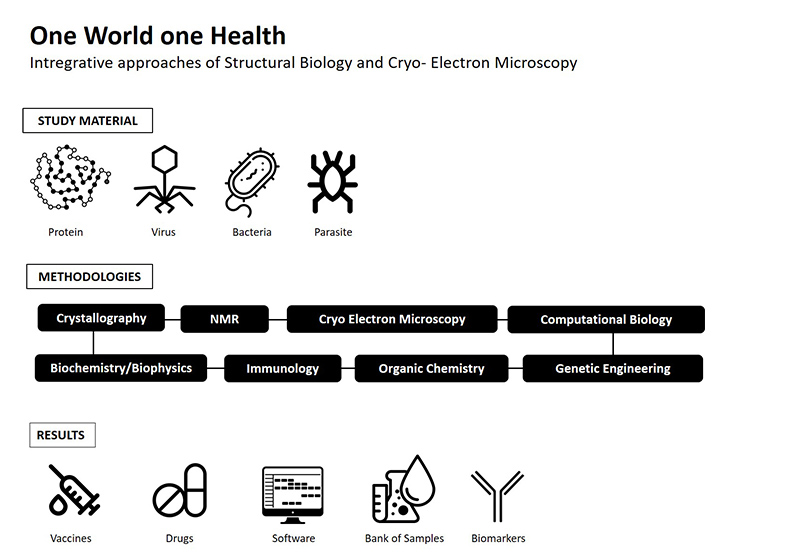Mission
Integrative approaches in Structural Biology and cryo-Microscopy

The synergy between CeBEM Center of Structural Biology from Mercosul, and Instruct-ERIC (Instruct-European Research Infrastructure Consortium, along with new groups, is focused on consolidation of knowledge in the field of integrative structural biology, with a strong impact in the health area. The access to cryoEM infrastructures in Brazil (LNNano) and in Europe through Instruct via memoradum of understanding (MoU) will be particularly important for all the groups. It will be possible to explore with maximum efficiency a wide range of complementary approaches, including the revolutionary advances in 3D cryo-electron microscopy. Sharing experiences between the various infrastructures will be beneficial to the implementation of good practice procedures in facilities. The groups that make up the Consortium are actively involved in the production of science at excellent levels, with interests in the development of vaccines and drugs for prophylactic and therapeutic intervention in human and animal pathologies. That's why we expect a qualitative leap in our abilities to formulate more effective vaccines and devise promising therapeutic molecules for the ongoing investigation, with a significant impact in the area of health.
A detailed knowledge of the structure of macromolecules in the cell is essential to understand their biological functionality. This thematic network involves groups using structural biology techniques, such as X-ray crystallography (MX), Nuclear magnetic resonance (NMR) and Cryo-Electron Microscopy (cryoEM) to elucidate the three-dimensional structure (3D) of proteins with biomedical interest, thus contributing to the development of new therapeutic compounds (rational drug design). This structural analysis is usually complemented with other techniques, such as molecular and cell biology, genetic engineering, biophysics, biochemistry, immunology, pharmacology, medicinal chemistry, bioinformatics, molecular modelling and simulation, supplemented with in vivo and in silico studies.

The originality and strengths of this proposal include:
i) quality of the scientific research from the participating groups in this network and their focus in the Animals and Humans Health area,
ii) multidisciplinary approach to Health problems by using a wide range of techniques and methods,
iii) complementarity of expertise among the different groups, which will foment the collaboration between partners, paving the way to explore new areas of research along with new methodologies,
iv) combination of experimental and theoretical studies, which will allow a better understanding of underway studies and eventual technology transfer among groups,
v) learning new structural biology methodologies, in particular single particle cryoEM, via collaboration among partners with different levels of knowledge and users with different degree of experience, software programmers, data analysts experts in the technique, and managers/administrators of high resolution microscopy installation LNNano in Campinas; Brazil, which will be open to the structural biology community of LA,
vi) collaboration between communities of Latin America and Europe, reinforced by the bilateral agreements between CeBEM and Instruct-ERIC mediating the access of researchers to state-of-the-art centres, and vii) partnership between academic and industrial sectors (pharmaceutical industry).
Therefore, a clear synergy will be created among the partners, making the overall more effective than the sum of each individual contribution



